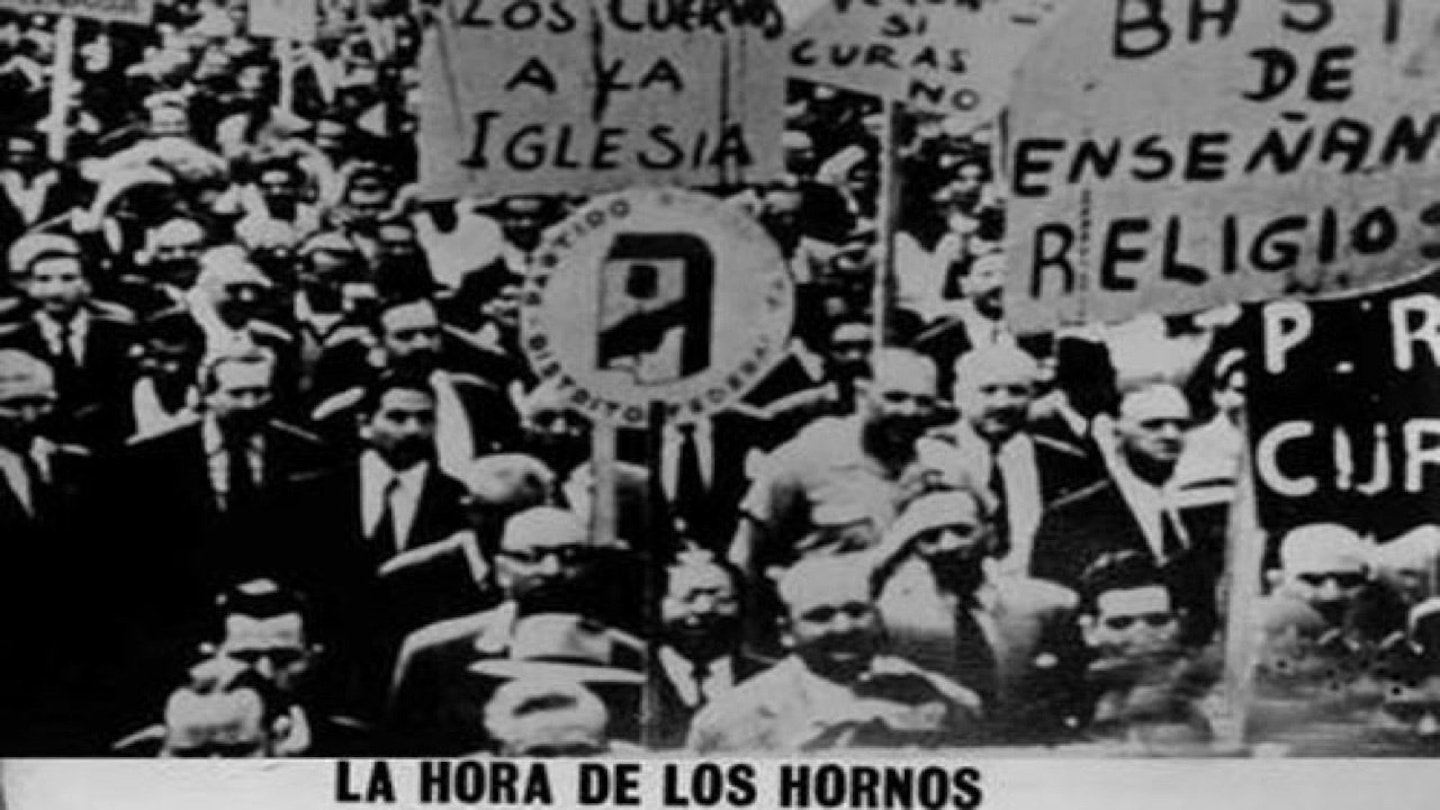Fernando E. Solanas and Octavio Getino began assembling archive footage and conducting interviews for this landmark documentary in 1965. By the time they were finished, the military had seized power in Argentina and the outlawed film could only be screened in mobile units sponsored by the Grupo Cine Liberación, which later disseminated Solanas and Getino's celebrated manifesto, `Towards a Third Cinema', which called for the emergence of a militant cinema dedicated to promoting the political causes neglected by film-makers in the First (Hollywood) and Second (Auteur) traditions.
Running for some 260 minutes, the action comprised of newsreels, testimonies, dramatic reconstructions, filmic citations and photographic stills, which were given greater avant-garde intensity by the linking use of captions, pop graphics, freeze frames and montages. It was divided into three sections. The opening cine-essay, Neocolonialism and Violence', declared that Argentinian history had been corrupted and proceeded to posit the true story by juxtaposing images of class exploitation and social injustice. This paved the way for Act for Liberation' - which used talking heads to reclaim Peronism as a positive force and called for the triumph of socialist nationalism - and `Violence and Liberation', which attacked the concept of peaceful co-existence and demanded revolutionary change.
Bearing the influence of Dziga-Vertov, Eisenstein, Joris Ivens, Glauber Rocha, Santiago Alvarez and Jean-Luc Godard, this wasn't a film to sit down and contemplate. It demanded active participation, as it consciously bombarded the senses to provoke reactions on an emotional and intellectual level. Solanas's advertising background was readily evident in the way that message and image were manipulated to shape opinion and spark debate. Indeed, Parts II and III contained natural breaks to allow those attending the illegal screenings to air their views and discuss future strategies.
Seen today, the film seems clumsy and naive in places, as propaganda seeps into the polemic. But its editorial power and audacity remain undiminished and it still packs an emotive punch.
